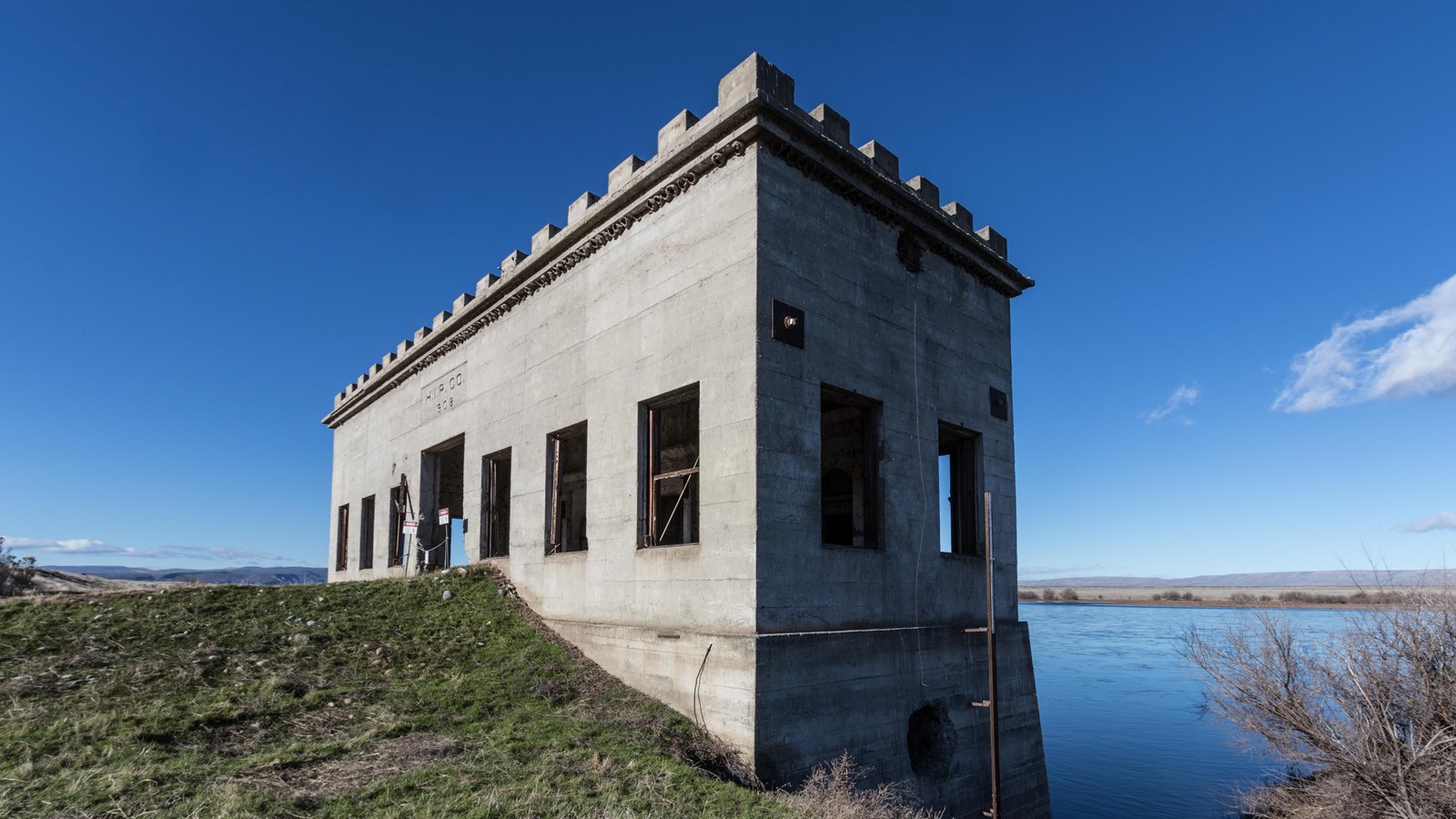Last updated: January 17, 2023
Place
Allard Pumphouse

NPS/BURGHART
Samuel Allard went to bed early one night after an exhausting day of work on his ranch. But loud, urgent noises and blinding light streaming into his farmhouse bedroom soon woke him up. Allard rushed outside, worried that his barn was on fire, only to find the cause of this unusual phenomenon. Forty of his friends from White Bluffs had parked their cars around his house and were shining their lights on his bedroom and honking their horns to summon him to a surprise birthday party that lasted into the wee hours.
As this anecdote demonstrates, Allard was a well-regarded member of the pre-war White Bluffs community. Allard moved to this area in 1908, helping build and later operate the hydroelectric plant and irrigation pumping station at Coyote Rapids. Allard ran the pumphouse for thirty years. Local farmers, who needed irrigated water to transform the arid shrub steppe grassland into profitable farmland, found Allard’s mechanical talents immensely valuable.
Allard served his community as a County Commissioner, Grange (a farmer’s social/advocacy organization) leader, and President of the White Bluffs Commercial Club. In 1941, Samuel Allard relocated from his ranch to a new home in the nearby community of Prosser. Allard died in 1945. His grave is located with other White Bluffs residents at the Prosser Cemetery.
Irrigation made farming this area possible. This facility, which supported struggling homesteaders and wealthy orchardists alike, provides a sense of how farmers transformed the area into productive farmland after years of hard work. By the 1940s, local farmers developed extensive orchards and used the nearby railroad to ship produce to national and international markets. People as far away as Egypt treated canned pears from this area as exotic delicacies worthy of royal banquet tables.
The Manhattan Project acquired the Allard Pumphouse and surrounding farms through eminent domain in 1943. This action displaced area tribes and the farming communities of Hanford and White Bluffs.
Continue Your Journey
The Department of Energy offers Pre-War Historic Sites Tours that explore the communities of Hanford and White Bluffs that were displaced by the Hanford Site. At the White Bluffs Bank, you can see the only surviving structure from the small town where local farmers went to shop and socialize. Surviving buildings at the Bruggemann Ranch demonstrate the prosperity that large farmers attained before the Manhattan Project. At the Hanford High School, you can see a major community institution that educated local people prior to the Manhattan Project.
If you are unable to attend one of these tours, you can see the former White Bluffs community from the White Bluffs Overlook and the Hanford High School Overlook from the White Bluffs trail on the Hanford Reach National Monument.
